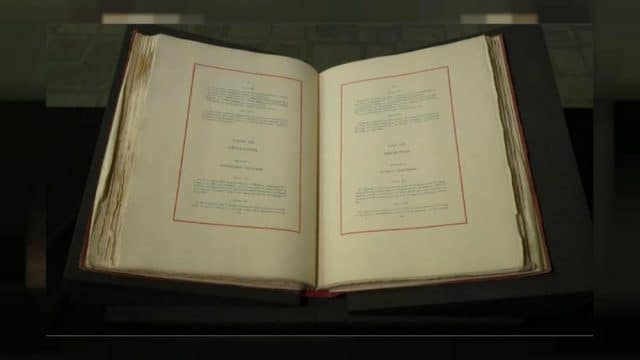
Versailles was the first of five Paris peace treaties that reshaped the world after World War I but, one century on from its signing, what were its key impacts?
1. End of World War I
The fighting ended on November 11, 1918 but the formal end to one of the deadliest conflicts in human history did not come until June 28, 1919.
2. Start of World War II
The most famous legacy of the Treaty of Versailles is that its draconian terms — designed to prevent Germany from repeating its military aggression — instead created an economic and political crisis that led to the rise of Hitler and the start of World War II. The ‘war guilt’ clause, which apportioned all blame to Germany, and crippling reparation payments, turned the peace treaty into what effectively became a 20-year armistice.
3. The League of Nations
The forerunner to the modern United Nations, the League of Nations was the first global institution founded on a principle of mutually-assured defence — the guarantee that countries would defend each other from aggression. But although President Woodrow Wilson was a key architect of Versailles through his ‘Fourteen Points’, the United States never joined the League and it remained ineffective until its demise.
4. Alsace Lorraine returned to France
The region, which had been annexed in 1870, was returned to France along with a slew of other European territories. In total, Germany forfeited almost 70,000 km2 of land — shrinking by more than 10% — but the loss of the valuable coalfields of Alsace Lorraine was a particular blow. As part of the wider European carve-up, part of western Prussia was given to Poland, giving it access to sea through what became known as the ‘Polish Corridor’ containing Danzig (Gdansk). It gave Poland vital access to the Baltic Sea.
5. The International Labour Organisation
The treaty established the International Labour Organisation, set up to broaden and standardise global rights such as decent work and pay and social protection for all.
6. Cemented the concept of Yugoslavia
Balkan disputes were the trigger-point for World War I, and the fashionable concept of a single slavic entity gained traction during the conflict until the formation of the Kingdom of Serbs, Croats and Slovenes. Although the western powers at Versailles did not themselves create the new country, their acceptance of it — amid fierce objection from Montenegro — cemented what became the first iteration of Yugoslavia.
7. End of Germany’s global empire
Under the terms of the Treaty of Versailles, Germany’s colonies were taken over — officially as mandates of the League of Nations, but in practice under the control of Britain (Togoland and Tanganyika), France (Cameroon) and Belgium (Ruanda-Urundi). Other changes on the global map saw Samoa handed to New Zealand and New Guinea to Australia. This colonial carve-up remained in force until World War II.







